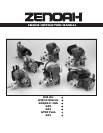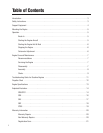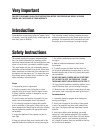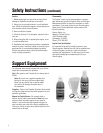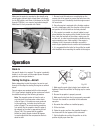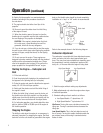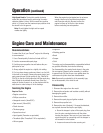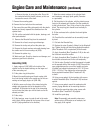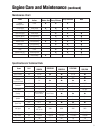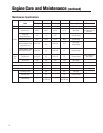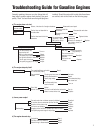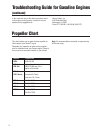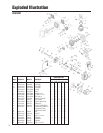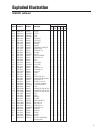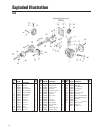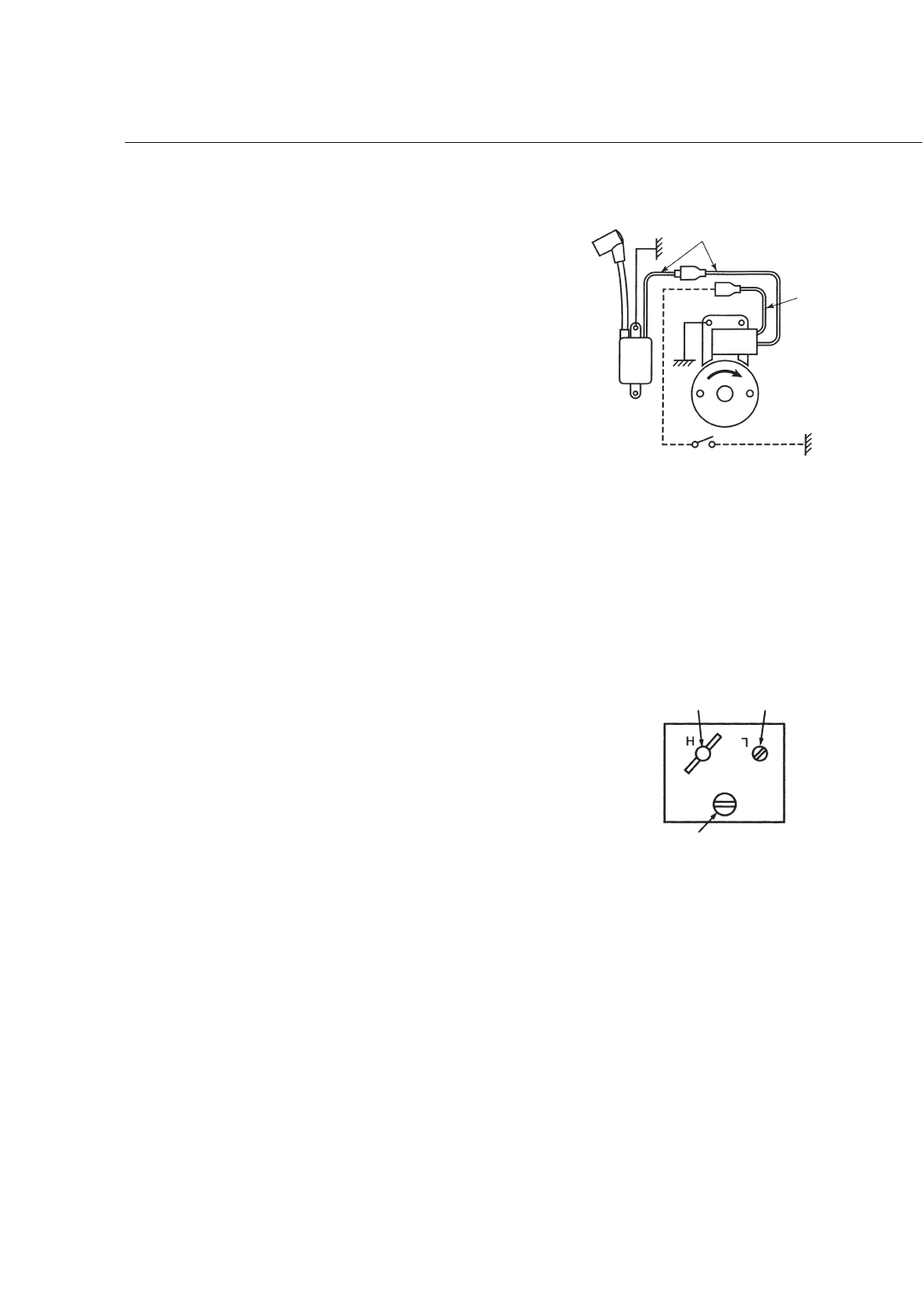
6
Operation (continued)
8. Quickly flip the propeller in a counterclockwise
direction according to the procedure described in
the note above.
9. The engine should start after a few flips of the
propeller.
10. Be sure to open the choke when the initial firing
of the engine is heard.
11. When the choke is opened, be sure to close the
throttle valve to a position near the idle position before
the next flipping of the propeller is attempted.
CAUTION: If the engine is started when the throt-
tle is wide open, a great thrusting force will be
generated, which can be very dangerous.
12. If you do not use a chicken stick to start the engine,
be sure to wear a thick glove when flipping the propeller
and use all fingers, except the thumb, for the flipping
operation.
13. Do not over-rev the engine. These engines are
designed to develop maximum output with the standard
muffler and the recommended propeller size. Please
refer to the propeller chart on page 10 to confirm the
proper propeller for the applicable Zenoah
®
engine.
Starting the Engine— Helicopter and
Boat
1. Fill the tank with fuel.
2. Push the priming bulb located on the carburetor until
fuel appears in the priming bulb (for helicopter).
3. Choke the engine and open the throttle valve approxi-
mately 1/3–1/2 of the full open position.
4. Quickly pull the starter cord until the initial firing of
the engine is heard.
5. When the initial firing is heard, open the choke, set
the throttle valve at the idle position or at the position
slightly open from the idle position and quickly pull the
starter cord a few more times until the engine starts.
6. For helicopter operation, you should adjust the rotor-
pitch to obtain a 9,000 to 10,000 rpm of the engine at
full throttle operation.
Stopping the Engine
The ability to shut down the engine in an emergency is
extremely important. For stopping the engine, the black
lead wire from the coil should be grounded to the engine
body, or the throttle valve should be closed completely.
Installation of a “stop” or “kill” switch is recommended.
Refer to the example shown in the following diagram.
Carburetor Adjustment
The carburetor is provided with three adjustment screws,
which are factory set to the best (approximate) posi-
tions. They may need minor adjustment, depending upon
the temperature, humidity, atmospheric pressure (alti-
tude), etc., of the area where the engine is being used.
1. Start the engine without making any adjustments.
2. Make adjustments only when the engine shows signs
of inefficient operation.
3. Standard settings of each needle is as follows:
a. Low-Speed Needle: 1
1
/
8
plus/minus 1/4
b. High-Speed Needle: 1
3
/
8
plus/minus 1/4
Idle Screw: Turning this screw clockwise increases the
idling rpm. Turning it counterclockwise decreases the
idling rpm.
Low-Speed Needle: This is the fuel adjust screw (not
the air screw). Turning this needle clockwise makes the
gas mixture leaner, and turning it counterclockwise
makes it richer.
Red Lead
Black Lead
Kill Switch
Engine
Body
Ground
High-Speed Needle
Low-Speed Needle
Idle Screw



